 Name one dispute in the FS community that will never, ever have a satisfactory conclusion for all those concerned. Yes, it’s the Airbus vs. Boeing discussion. Although it’s not as pronounced as, say, the Macintosh vs. Windows dispute, enter an Airbus fans’ forum and you’ll soon stumble over those hating Boeing, and vice versa. Who of us didn’t hear of the slogan “If it ain’t Boeing, I’m not going”? Or, is it “If it’s Boeing, I’m not going”? You decide for yourself. I will only give my own side of the story.
Name one dispute in the FS community that will never, ever have a satisfactory conclusion for all those concerned. Yes, it’s the Airbus vs. Boeing discussion. Although it’s not as pronounced as, say, the Macintosh vs. Windows dispute, enter an Airbus fans’ forum and you’ll soon stumble over those hating Boeing, and vice versa. Who of us didn’t hear of the slogan “If it ain’t Boeing, I’m not going”? Or, is it “If it’s Boeing, I’m not going”? You decide for yourself. I will only give my own side of the story.
I’ll be frank. I used to absolutely loath Airbus planes. I hated their appearance. Their exterior model seemed so wrong! I couldn’t comprehend why anybody would like it. So okay, the A340 was somehow imposing, but the A330 seemed like a fat fish of sorts to me. But then it started… Somehow I got interested in Greenland. Sounds like a pretty random conclusion to this paragraph, eh?
What does Greenland have to do with this? See, Air Greenland operates, besides lots of small turboprop aircraft and helicopters to service the many small airfields and heliports across the country, two airliners which connect Kangerlussuaq with Copenhagen: the Boeing 757-200 and an A330-200. Somehow, the A330 entranced me. I knew I was never going to look at Airbus aircraft the same way again (oh, the drama!). And indeed, I started really liking the A330. After that came also the A320, A319 and A321. The A318 I have always found too short to be good-looking, much like the Boeing 737-600, whose wings seem somehow too long for the fuselage they carry. And what about the A380? I still dislike it to this day.
Wilco has tried to give us the entire modern Airbus line-up, and they succeeded. From the A318 all the way to the A380, they are there for FS2004 and FSX. In this review I will only cover the A318 through A321, though, which is the contents of Wilco/feelThere’s Airbus Volume 1: Deluxe edition. I will also cover the much talked-about paid upgrade by Eric Marciano, who was kind enough to give me a review copy for my testing purposes.
Because the review will be rather long, I cut it up into two parts. Part 1, what you are reading now, covers the installation, documentation, model, sounds and 2D panel looks. Part 2 will be all about the flight dynamics and systems and Eric Marciano’s paid upgrade.
Airbus of the Europeans: The Curse of the European Plane
Before diving into the Wilco rendition of these very successful planes, I want to take a minute to discuss what I call the “curse of the Airbus”. I believe there is a curse on these planes. I base this one the frequent failure of developers to give a true Airbus simulation. Don’t take me wrong: not all Airbus simulations out there got taken down by criticism, but in those cases, usually something else ended up being wrong or missing. This is completely contrary to many other manufacturer’s planes, of which most prominent is Boeing: for practically every model there is at least one high end simulation.
Regarding the Airbuses, first in line was PSS. While many still use it because of the reliable system simulation, it doesn’t simulate Fly-by-wire. Fly-by-wire is basically what makes an Airbus an Airbus: it’s essentially a computer stuck between the pilot and the control surfaces. The pilot moves the sidestick, and the computer registers the movements. It then proceeds to check the current condition of the plane in 3D space (roll, pitch and yaw), and finally it sends its own commands on to the control surfaces. This means that the pilot under no circumstance can overstress the airplane, with which one can get great safety benefits. As a comparison, we have Boeing planes like the Boeing 767: the pilot controls the control surfaces directly. Note that of course there is a computer that registers the yoke’s movements, but the computer does not determine if the yoke movement should be executed or not. In Airbus planes, it does do that, meaning that not all sidestick movements have an effect.
So, because of that, I think that Fly-by-wire (hereafter to be called FBW) is the heart and soul of the Airbus plane. Failure of modelling it means, in my opinion, that you in effect created a Boeing plane in an Airbus shell. So, therefore, I personally think one can’t seriously consider the PSS A320 a “real” Airbus simulation. Opinions vary on this point, of course.
Then we have the AirlinerXP project, which set out to provide us the great Airbus simulation. It looked very promising and there was much hype; alas, nothing came out of it. It has gone quiet since some time and many claim it’s dead. A great pity indeed!
Now there’s also AirSimmer. AirSimmer said they would do what AirlinerXP didn’t do: make the ultimate Airbus. Their A320 has been in development for a considerable amount of time, showing videos and screenshots now and then. The visual model (both exterior and interior) looks great, to be sure. It also simulates FBW, although some say it does it well and others say it doesn’t do it well. The problem with the AS A320, however, is that it came burning down from the sky because of the release of the Basic Edition: a A320 simulation marketed as, essentially, an incomplete product, with bugs and many “advanced” systems missing. Now, though, they came to the conclusion that the original was, and I quote: “a dead end”, and many core systems are being reprogrammed. So, there you have it: another developer that sort of fails at the Airbus. Of course, it is still to be seen what happens next at Airsimmer. I, for one, sincerely hope they can get their act together.
Aerosoft has also been working on an Airbus simulation for FSX only. It is stated that it’s a medium difficulty addon, meaning many advanced systems have been left out, and essentially is not the Airbus simulation many people have been waiting for. It looks very good, but it’s not the advanced plane many Airbus lovers seem to yearn for.
Overland has also made a package of many Airbus aircraft, including the Airbus aircraft covered in this review (A32X family). These planes, however, have hardly any system simulations: it’s nothing more than a default plane. FBW is also absent. So is it a competitor for PSS, AS, Aerosoft or Wilco? Not really. Not if what you want is at least moderate system simulation.
Finally, there is also Wilco. They are so far the only guys to have given us a full series of Airbus aircraft that seems to simulate FBW, gives a visual model with VC and full cabin, and it doesn’t crash for many people every now and then. I’m seriously curious how they faired, and I’ll be taking you with me on my journey through Wilco’s Airbus Volume 1: Deluxe edition. Just one note: I’m reviewing the FS2004 version of the package, not the FSX version. I assume the differences are small, though, but the manual did list that the configuration manager is not available to FSX users and there are some extra FS2004 features that didn’t seem to make it FSX. These seem to be fairly minor however, and should not be regarded as deal breaking.
Installation and documentation
The first idea one gets from a product is at installation. If the installation goes smoothly, customers tend to approach the product with a better attitude, than if things are seriously messed up while installing the plane. This, of course, is logical. Luckily, Wilco has made it easy for us to install this plane: we get three executables and all install their own stuff in the way we are accustomed to. One installer installs the FS9 version, one installs the FSX version, and the final executable installs a movie about flying the A32X family. That’s a nice addition! So all in all, installation was smooth and fast.
The documentation is the second thing a customer would wish to set eyes on. As I already own Wilco’s Airbus volume 2 package, I sort of knew what to expect, and ultimately, although it seems to tell most of what there is to tell, I think it could have told you more. I look at operating manuals as supplied by PMDG, for instance. They supply an almost 400 page manual together with their Boeing 747; the Airbus Volume 1’s manual is 100 pages. While length doesn’t say everything, it is of course indicative of the amount of useful information inside.
The manual is broken up into various chapters. We first find an introduction to the product, after which there is a five-page tutorial flight. While it seems to describe all phases of flight and therefore looks like a good beginner’s utility, it seems too basic for the advanced user. Moreover, it seems like an expanded checklist, and nothing more. That’s disappointing, because I have seen very good tutorials by other developers. Vertical Reality simulations ships a great tutorial with their F/A-18, and also PMDG and Level-D offer great tutorials. Why Wilco does not I’m not sure, because this Airbus simulation is marketed as a very real thing. The rest of the manual explains most, if not all the systems. It does it well enough and generally it’s very clear what all buttons and such do. Fortunately, it also explains why you would want to use certain modes in certain conditions and it offers additional information. This is often very useful. Regarding that, I have no reason to complain. Although I acknowledge it’s a personal preference, but I’d rather have that additional information in the tutorial, too. If you put such info in the tutorial, it means beginners don’t have to trudge through 90 pages of manual. They can go through a 10 or 15-page tutorial, and learn all the basic stuff.
Exterior model
The models you get in this package are the A318, A319, A319CJ, A320 and A321,and where applicable you get both IAE and CFM engine variants. For this review I’ll be mostly focusing on the A319 and A320. Honestly, the differences between the models are minimal. The basic shapes are all the same. It’s mainly the length of the planes and the engine models that are different. So, I’ll be focusing on an Austrian Airlines A319 with CFM engines for now. Later I will show you how the IAE engines are different. Note that the Austrian Airlines was downloaded from the Wilco website, so I assume it’s been done by a feel there texture artist. We’ll start with some overview shots:
The first shots show you the A319 as a whole, and it doesn’t look shabby at all. For as far as I can see, this model actually looks pretty darn good. Most seems to be right, and on the whole there is enough detail to please the eye. Now let’s get a bit closer.
I personally think this looks great. No blocky edges, nice window reflections and the metal fuselage also has a nice amount of reflection that is just right. It’s not too much for the purpose, yet not too little, making it look like a plastic model. One thing I noticed is that, although the pilots are fully textured, the actual cockpit is not. I have seen no repaints, including the standard Airbus House livery that ships standard with every model in the package, that have a textured cockpit. This is a great pity I find, because when you look at the plane from the front you’ll soon see that the entire cockpit is white/greyish.
Moving our view down, we can get a good look at he nosewheel. The detail on the gearstruts is enormous, with all kinds of little springs, wires, lights and whatnot modelled very nicely. Texturing is a bit blurry however, but I guess that, considering the modelling, this isn’t such a big point. Also, with such small parts, textures can easily seem blurry when actually, at greater distance, they are fine. My point being: you’ll rarely be looking at the gear from this close by.
 Closeup on right engine, and view of the side of the left engine.
Closeup on right engine, and view of the side of the left engine.
Moving on to the wings, we get to see the engines first. This is the CFM model, and I’ll show you an IAE engine later on. As you can see, it’s okay on the whole, but the engine case seems to be not as round as I’d want it to be. Meaning, it’s noticeably round. I also think the reflection on this part of the engine is too apparent. It could have been toned down a bit. Further more, I’m not a great fan of the textures used in the animation of the turning fan blades. It now looks as if there is a greyish spot alternating between the left and the right side of the fan blades, which gives an unrealistic representation of the turning fan blades. The PMDG 747, for example, doesn’t have this, yet you notice the turning fan blades mainly because of a subtle movement of the engine cone (for lack of a better word, when I say “engine cone”, I refer to the part in he middle of the engine that support the fan blades). It’s more realistic and in my opinion looks a lot better. I also included a view of the left engine of the side. The shape of the engine is okay, but the texturing of the details is relatively blurry and honestly I think it could have been done better.
 The wings: normal and all-out.
The wings: normal and all-out.
Moving our view up, we can look at the wing. It looks okay. It’s a wing, you know, there isn’t much about it that looks spectacular. It only becomes interesting when spoilers, slats and flaps are deployed, and this is what I show you in the other two screenshots, where I’ve gone all-out. You can clearly see the various parts now with their texturing, and I think it’s quite okay. The texturing isn’t great here, but let’s be honest: how often will you look at these specific parts during flight? Indeed, not that often. Taking that into account, I’m rather happy with both the animations of these parts, and the texturing. It seems to be looking quite good.
The hind gear is a different story. While the modelling looks okay, and some care has been taken to model the wires correctly, I find the texturing to be blurry. Blurry in a way that I think it can and should have been done better. The blurriness problem is mainly on the front side of the gear strut, as you can see. It looks like a yellowish background with weird spots on it that make me question if this is the right texture.
 Tail with the vertical stabilizer.
Tail with the vertical stabilizer.
We have now looked at most of the exterior. It’s only the vertical stabilizer that is still to be looked at. This part you see in the screenshot above. There isn’t too much to say about it, actually… It looks good, although I feel the reflection here could have been toned a bit too. It looks weird when most of the plane has a moderate amount of reflections, and only the tail and engine “cones” seem to have more of it. Other than that, it’s all just fine.
Just one more thing is to be looked at: the IAE engine model. The entire fuselage and so on and so forth of course is completely the same, so I will only show a screenshot of the IAE engine model itself. Below you will first see an A319, then the A320, and last the A321 with the IAE engines. Look closely, and see if you spot differences…
 A320 with IAE engines.
A320 with IAE engines.
Did you see it? I bet you did. Although the modelling of the engine is good and looks authentic to me, both the A319 and A321 have some weirdness with the fan blades. The A319 lacks them, and there is blackness around the fan blades in the A321. Regarding the A321, if you look a little closer, you’ll see that also the engine “cone” is positioned wrongly. It’s not centred, rather a bit too high. Feelthere support told me this is an extremely rare issue and they advised to reinstall. I so did, but it didn’t help. Chances are you won’t have this strange error, but the fact that it does occur and there is no fix for it is not good.
I believe that repainters often can judge a model best, besides those that work regularly with the relevant aircraft. Why do I think that? Mostly because, when you repaint a plane, you sit behind your computer staring for hours at lots of photographs of the plane you are willing to reproduce for the model of your choice. I can tell you I have been spending lots of time looking at Scandinavian Airlines A319 and A321 aircraft photographs, and to do the repaint I have rather intensively used the provided paintkit (which, thankfully, is better than the average feelthere paintkit…). Looking at the photographs, the paintkit and the actual 3D model as shown on the screenshots, I can safely say that most of the model is accurate. There are details that are, most certainly, off. This is limited to some various decals and warning signs, fortunately, and the actual model seems to be pretty accurate.
Interior model
Here we have another one of such disputes that will never end: how important is the interior model? For me, it makes all the difference. It’s where I sit most of the time, using the 2D panel only sporadically to adjust FMGC entries, manipulate the overhead and other minor stuff. In this specific model, however, I’ve already noticed I tend to use the VC even more than in, for example, the PMDG 747. This has got mostly to do with the rather simple overhead, which is also rather easy to access. The Boeing 747 has a huge overhead, filled with tiny buttons and switches. It’s difficult to “reach over” to a switch on the other side of the panel and be able to click it correctly, so I end up using the 2D panel instead to manipulate the overhead. The Airbus overhead doesn’t have this problem, and I use the VC overhead much more often than its respective 2D panel. It’s only the FMGC I manipulate with 2D panels. So, how did Wilco do its job? Remember, for me a product can become a lot less enjoyable if the VC turns out to be crappy. Don’t think I’m always so nitpicky, though! I fly planes that have no VC at all, and I am perfectly content with them. The difference between these planes is pretty simple though: the Airbus package costs 50 Euros or so, the VC-less planes I fly are freeware. But, enough of all of that. Let’s get to the part you are really interested in: screenshots!
First an overview. This really doesn’t look too shabby. As a matter of fact, I think it looks quite nice. The texturing seems to be photorealistic (which I prefer to hand drawn, most of the time), and there seems to be a lot of 3D modelling of buttons and switches. Lets take a closer look now.
This is the view you’ll start each flight with: the captain side of the VC. What can we see here? Well, texturing looks okay, modelling looks good, and the gauges seem easily readable and easy to use on the whole. Basically, it looks like rather comfortable VC to use. A lot of moving things seem to have these small pop up tooltips to help, although they sometimes tell the complete obvious, which make you wish they weren’t there, as you can see in the screenshot.
Here is an overview shot of the main panel and pedestal, showing you mainly the overall quality of the VC. Basically, I think this VC looks great. The texturing seems phenomenal and the modelling is very detailed. We see tons of tiny buttons on the pedestal which makes the overall thing looks great. As an aside, when I wrote this, a guy was sitting next to me who actually thought the screenshot was a photograph. If that is the effect it has, then its bound to be good. What struck me as very good especially, is the seatbelt you see draped on the captain’s seat. It looks genuine, to me pleasant surprise. Problem is, this is all from afar. Let’s move closer to see if from close by it looks as good.
 Pedestal with throttle quadrant
Pedestal with throttle quadrant
First I’ll show you the throttle quadrant. The detail is quite immense, with, it seems, just about all possible buttons modelled. It looks great, and I’m a fan of photorealistic textures, which, as you can see, have been used extensively here. All in all, I think the texturing and modelling has been done very well.
The overhead panel seems to be less of a success story. It looks rather flat and dull, with hardly any true 3D buttons here. The light switches and various other knobs are 3D as you can see, but all buttons are flat. While the real thing in fact is rather flat, it isn’t that flat. The buttons could have looked a little more realistic, and I noticed some weird things in the texturing. There are some buttons that, when pressed, seem to move one or two pixels either up or down, resulting in a moving annunciation (most of the time it’s either a blue ON sign, or a white OFF sign). So I guess this overhead could have looked more detailed. It’s not bad, certainly not when comparing to many other Airbus VCs currently on the market.
So here is probably one of the most unimportant parts of the VC: the window frame. Nonetheless, a carefully constructed and nicely textured window frame contributes to the overall feel of realism, and so this, too, is an important part of the VC. There is nothing less satisfying than staring at your high definition panel, then looking left, only to see a drab, blurry texture on a detail-less and boring looking window frame. Sadly, the window frame’s textures aren’t the best I’ve seen. What should probably be a cup holder, is rather blurry and is not modelled in 3D, which is a pity. The handle to open the window is non-functional and is equally blurry. That’s a true pity, because, while not as dramatic, it provides an example of the criticism I gave on having a good panel and drab surroundings.
That was the entire VC. It’s a rather functional and generally good-looking VC, and I personally like sitting in it. We’re not done yet, though! As feel there usually does, we have also gotten ourselves a passenger cabin. Here are some shots:
I always liked the fact we got a full passenger cabin in Feelthere aircraft, and I always regarded it as something good. Some will disagree and say it’s only bad for performance, which I guess is true to some degree. Nonetheless, it’s a feature I like and wouldn’t want to see removed. The above screenshots will give you an impression of what it’s like. You’ll conclude it’s goo enough for what it is. But I’d like to say that the front seats you see in the first screenshots, only look like they have giant seating because of the always-present “fish eye”-esque effect when zoomed out to some degree. However, not all is great in this cabin:
There are some enormous holes in this cabin, all at the back. This is sloppy and generally doesn’t do a good job of selling he product, if you know what I mean. That said, while I think such sloppiness should not occur under any circumstance, it is something you’ll only see at the back of the aircraft. The giant hole in the third screenshot is only seen when standing at the very back of the cabin and looking up. If you look at it from the front, you will not see it. This basically means these holes are very easy to omit and shouldn’t be a problem for you.
This concludes the interior model. It’s not time to give the 2D panels a look.
Panel
I never really liked 2D panels myself, but for a good portion of simmers, it’s still very useful. I myself tend to use the FMGC panel most of all available 2D panels, followed by autoflight controls (if available) and the overhead panel. Many people tend to use only the 2D panels however, and none of the VC. For these people, it’ll be nice to know there is a full set of 2D panels available, which is a feature that seems to be made less and less in recent times. Here are some shots:
 Throttle quadrant and pedestal.
Throttle quadrant and pedestal.
All panels generally look good, with photographs mixed with hand drawn elements to give a realistic look. I think they succeeded and I find the panel to be looking good generally. Most gauges are easy to read, but on the pedestal I sometimes had to look closely to see which buttons I exactly had to press. The gauges on the main panel are all easy to read however, and I think he panel should be easy enough to use for those that want to use it. Note that I’ll talk about panel functionality only at the “Taking it for a flight” chapter.
Sounds
Sounds are important. From a simple button click to the violent roar of the plane’s engines, it all makes for an immersive flight that would be pale and boring without it. The sounds in this package generally seem good to me. The engines sound good, and I like all the sounds in the cockpit of button presses and such. It’s only the GPWS that I find lacking. To me it sounds just like the Boeing GPWS. Videos on Youtube tell me it really doesn’t sound like any Boeing GPWS, so I’m a bit taken aback by what I found in this Airbus package. Quite possibly you can put in our own sounds, but the problem is that if one is going to change default stuff to get better quality, it means the original designers didn’t do a good enough job.
And what about the included movie?
Indeed, with the deluxe edition you get a movie from Justplanes. You have to install it with the same type of installation used for the actual aircraft package. I’m not sure why this is, but I think it has to do with that they want to make sure that only valid keycode owners are able to watch it. Because for the rest, it’s not like there is an uninstaller or any documentation. It only installs the movie is seems.
The movie itself has been shortened with roughly 20 minutes for the download version, making it 20 minutes or so. The original, which you get with the boxed edition, is one hour. Needless to say, I don’t think you’ll miss much, since the movie contains various takeoffs and landings with various airbus aircraft from various airlines into and out of various airports. It was a nice watch, but I don’t see myself looking at it very often, mostly because the image quality isn’t that good. This is all because it’s the download version. It’s possible that the boxed version provides you with much sharper footage. Anyway, if you are going to buy the deluxe because you want the movie, I say don’t do it. The movie is not worth the extra money.
Conclusion of part 1
I hope to have given you a first impression of this airplane addon. To summarize part 1:
- Installation is fast and smooth;
- Documentation is a nice read, but I’d wish to have more information. I’m sure there is more to tell than was currently done;
- Exterior model looks very nice;
- Interior model looks very well done too, and I love the wingviews. The texturing in the VC is overall well done and the gauges are rather easy to read;
- Sounds are good enough, but I guess there is some room for improvement;
- 2D panels look good: the gauges are easy to read and the panel bitmaps looks good.
- The included movie is nice, but ultimately not a great reason to buy the deluxe edition. Fortunately, the deluxe edition has more in store for you over the standard edition: the deluxe offers the A319 and it’s business variant, of which the former is widely used by many airlines. I don’t think you want to miss out on the A319!
I like what I have seen until now, save for the weirdness surrounding the IAE engine model. I’m not sure what to think of this. On the one hand, it’s a very rare issue, but on the other hand, it’s still an issue that, in my opinion, should have been resolved long ago. All in all, until now, the product fares well.
In part 2 I’ll cover the flight dynamics and the systems, plus Eric Marciano’s paid upgrade. Stay tuned!
Important details — Wilco Airbus Volume 1
- Developer: Â Â Â Â Â Â Â Â Â Â Â Â Â Â Â Â Â Â Â Â Â Â Â Â Â Â Â Feelthere/Wilco
- Medium:Â Â Â Â Â Â Â Â Â Â Â Â Â Â Â Â Â Â Â Â Â Â Â Â Â Â Â Â Â Â Â Â Â Â Â Â Â Â Â Â Â Â Â Â Â Â Â Â Â Â Â Â Â Â Â Â Â Download/Boxed
- File size:Â Â Â Â Â Â Â Â Â Â Â Â Â Â Â Â Â Â Â Â Â Â Â Â Â Â Â Â Â Â Â Â Â Â Â Â Â Â Â Â Â Â Â Â Â Â Â Â Â Â Â Â Â Â Â Â Â 126 MB (FS9)/153 MB (FSX)
- FS version: Â Â Â Â Â Â Â Â Â Â Â Â Â Â Â Â Â Â Â Â Â Â Â Â Â Â Â Â Â Â Â Â Â Â Â Â Â Â Â Â Â Â Â Â Â Â Â Â Â Â Â Â FS9/FSX
- Price: The scenery can be acquired at Simmarket for 49,94, here: http://secure.simmarket.com/wilco-airbus-series-vol-1-deluxe.phtml
Â
Reviewed by Benjamin van Sold
My system specs: Macbook pro with: Windows XP 32bit, 4GB RAM, Nvidia 8600GT, 300GB Hard disk (dedicated FS9 disk), Intel T8300 2,4 GHz Dual Core processor
Read Part 2 of this review, published August 08th 2010 -> CLICK



























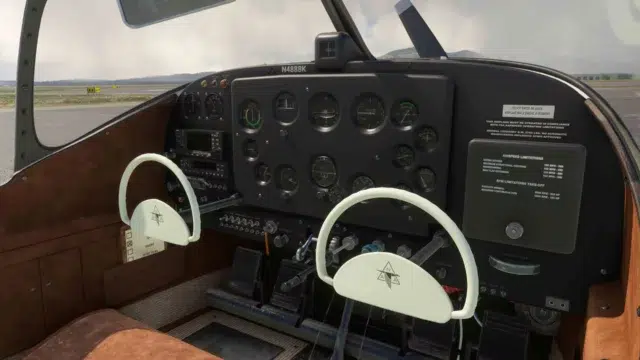
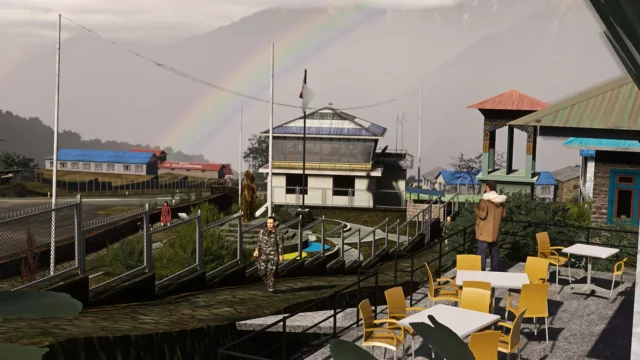
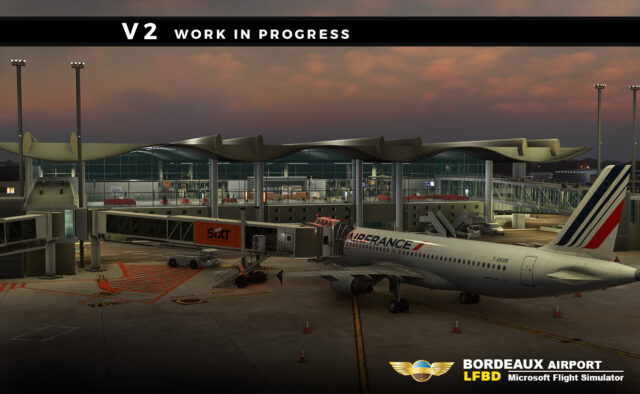
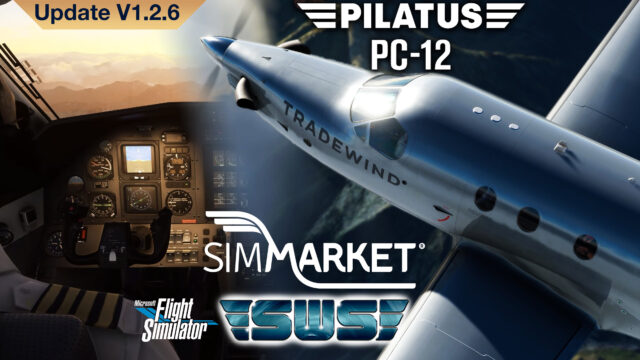

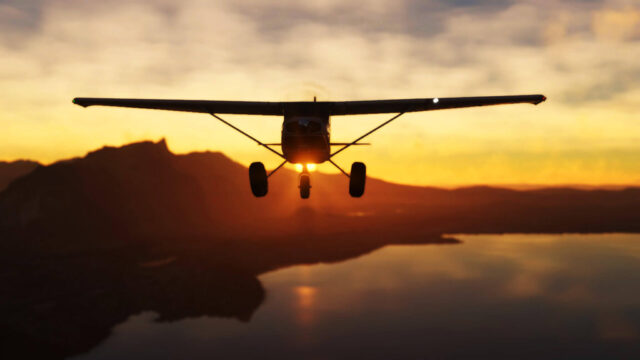
0 Responses
Good review! I can hardly wait for the second part. It’s kind of ironic isn’t it… a flight computer simulator having difficulties simulating a fly-by-wire system which is all computerized.